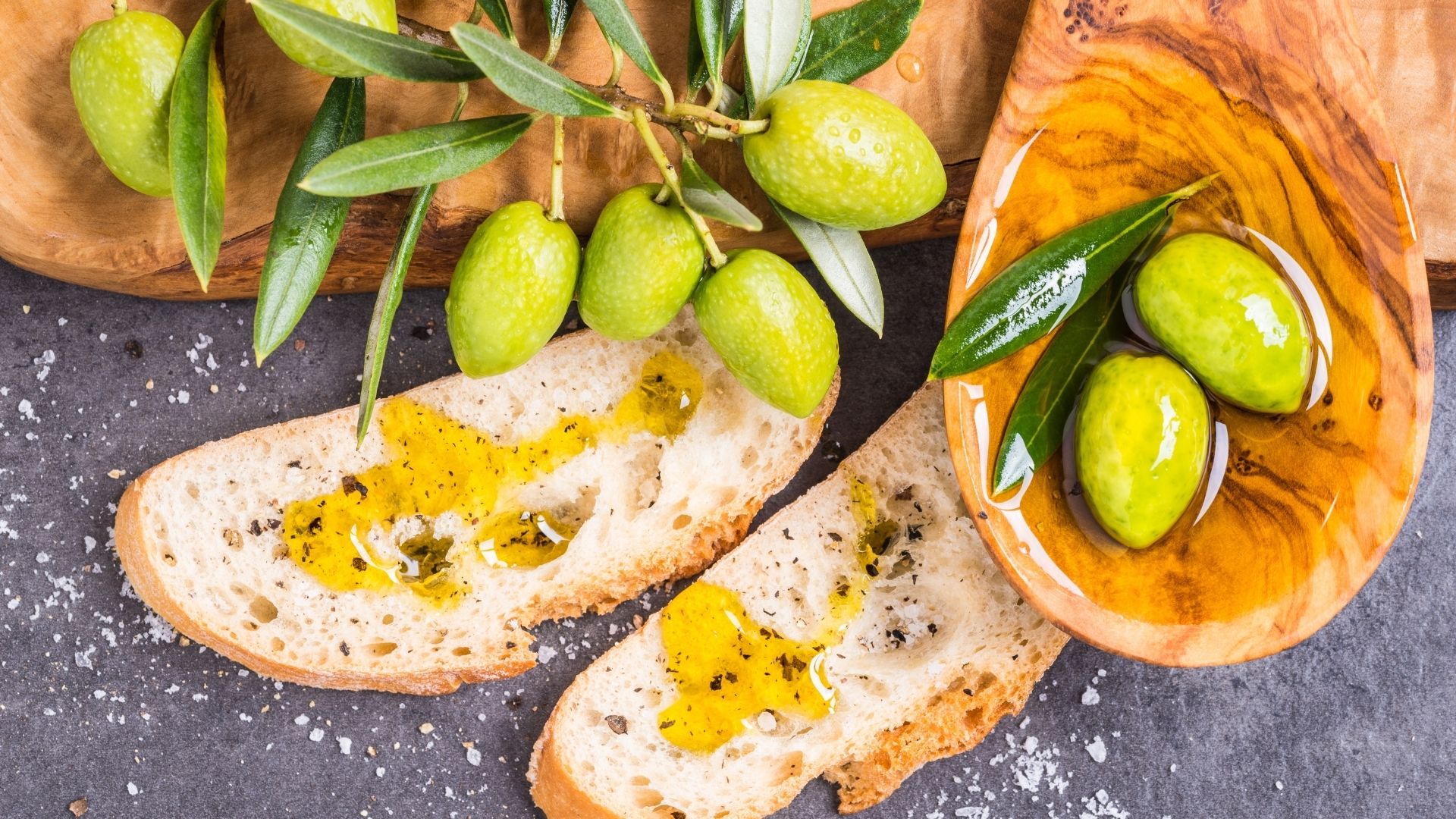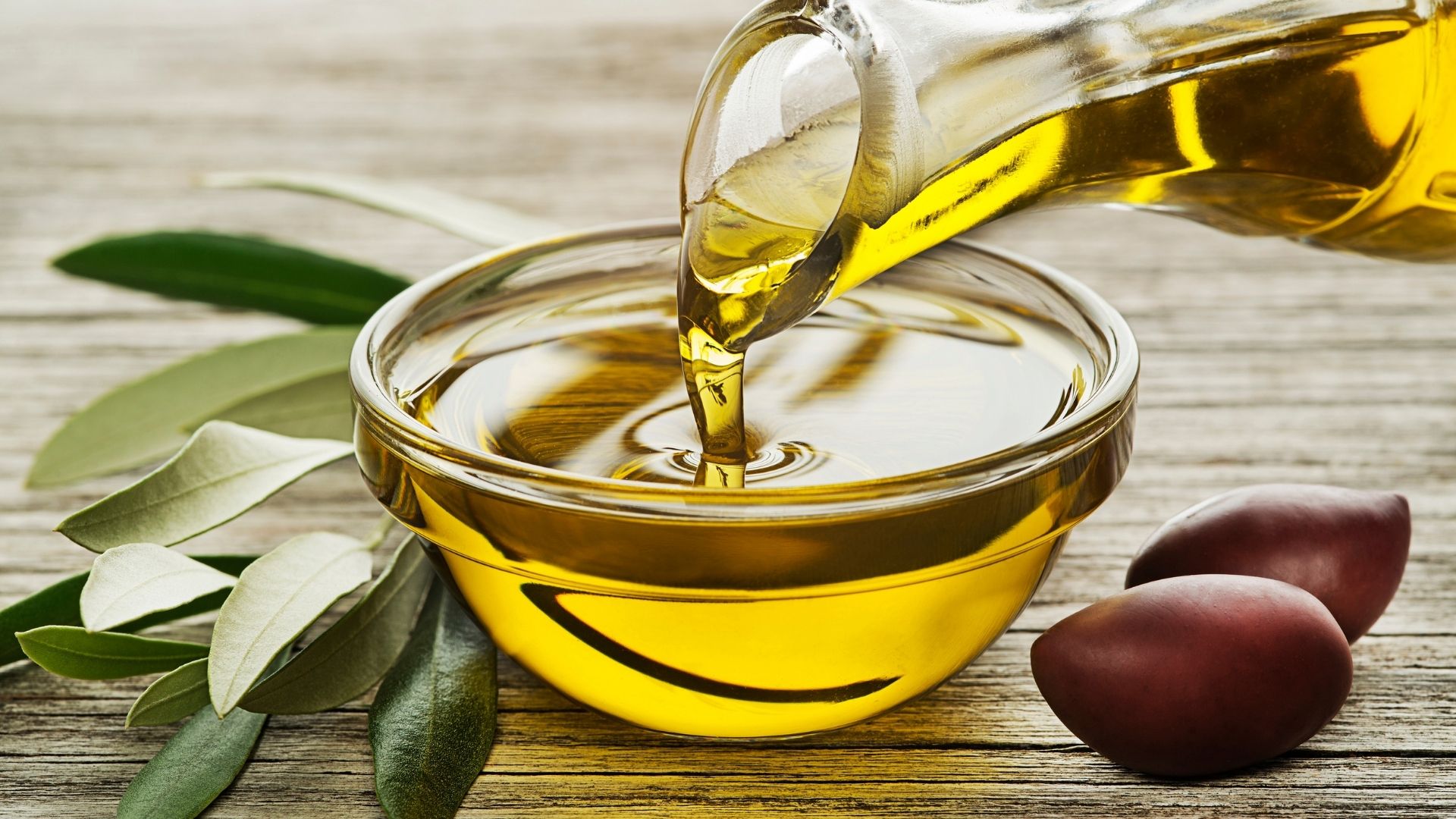Beneficial nutrients and its distinctive taste make olive oil a popular cooking oil. But should we also use it for frying?
Whether it’s with Mediterranean vegetables, salad or pasta: Olive oil is a great addition to numerous dishes. You’ve also probably heard about the health benefits of using olive oil. So surely we should use this oil generously when preparing food and also when cooking hot meals? However, many people have heard the myth that you shouldn’t use olive oil for frying. Find out here what you need to know about olive oil and how this myth came about.
This high-quality oil comes from olives, as the name suggests. Olives are the fruit of the olive tree, which belongs to the Oleaceae family of plants. Olive trees feel particularly at home in areas with hot summers and cold winters, which is why a large proportion of olives are cultivated in countries in the Mediterranean region. Whether it’s Greece, the south of France, Spain or Italy: There are olive trees everywhere! However, there are differences in the taste of the oil depending on its variety, the production techniques used and the unique microclimate of the region the olives are grown in. So not all olive oil is the same!
The production process and properties of olive oil
On bottles of olive oil, the indication of origin provides information about where the olives were grown. We can also choose between different quality classes of olive oil. Virgin olive oil is obtained exclusively by mechanical pressing without the addition of heat and is therefore also referred to as cold-pressed oil. The extra virgin olive oil designation ensures a particularly high quality. A large amount of mono-unsaturated fatty acids and nutritionally beneficial fat-soluble vitamins are what make virgin olive oil so healthy.
Other pressing processes require the addition of heat and the extracted oil must then undergo a purification process known as refining. Refined oil loses a large proportion of its beneficial ingredients and is for the most part colourless and neutral tasting. However, it also has a longer shelf life and can withstand higher temperatures during cooking than virgin olive oil. You should also use refined oil for preparing baby food because of the purification process. Now you can find out which oil to use in the kitchen and when.

The smoke point is decisive: It is possible to use olive oil for frying!
The smoke point is crucial for knowing whether olive oil can be used for frying. At this temperature, an oil visibly begins to smoke as the fatty acids begin to break down. In general, the more unsaturated fatty acids an oil contains, the lower its smoke point. However, with a high proportion of mono-unsaturated fatty acids, the smoke point is higher than for oil that has a high proportion of poly-unsaturated fatty acids. Virgin olive oil, with its high proportion of mono-unsaturated fatty acids, has a smoke point around 180°C. Refined olive oil has an even higher smoke point. This is because some unsaturated fatty acids are converted into saturated fatty acids during refining.
Do not heat an oil to temperatures above its smoke point. Since virgin olive oil has numerous health benefits, it is preferable to use it for cooking methods that do not exceed 180°C. Therefore, use virgin olive oil for cold dishes, meals cooked in the oven below 180 °C and gentle frying. For hot frying, however, refined oil is preferable.
Making your own oil: Is this possible and is it a good idea?
Do you like making your own special homemade kitchen creations? This raises the question as to whether it’s possible to make your own olive oil at home. The answer is: It’s difficult. Hardly any oil presses designed for domestic use are suitable for processing olives, as their pressing should ideally take place under a protective atmosphere and vacuum. In addition to this, freshly harvested olives must be used for production oil, which go straight from the field into the oil press. You can only get hold of fresh olives like these if you have a fruit-bearing olive tree in your own garden.
It’s useful to know that for 1 litre of oil you’ll need about five to ten kilos of olives. Do you have a suitable oil press? Harvesting takes place between autumn and winter. A word of caution: Olive oil suffers a loss of quality if the olives are damaged during harvesting. Therefore, gently shake the fruit from the tree by tapping the branches by hand and catching the olives in the process. Then put them in the press and fill the oil into dark bottles. Alternatively, selecting a high-quality virgin olive oil from your favourite region at the supermarket is also a great choice!

#myths, #oliveoil, #frying, #smokepoint, #virgin, #refining, #refined, #fattyacids, #harvest, #highquality, #oilpress, #production
